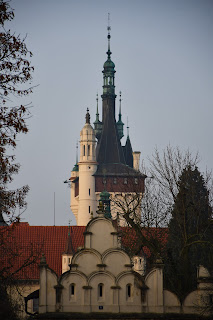A Weekend in Amboseli
One of my friends is leaving Kenya for the foreseeable future, and since we have been talking about going on a safari together for the last two months, we decided to make it happen this weekend. I did most of the planning for the journey, beginning with the all-important decision of where to go. Although the rainy season, which lasts from March to May, is generally considered to be Kenya’s low season, there are several reasons why to go on a safari during that time. First and foremost, hotel prices tend to be lower during the low season and accommodation is easier to find on short notice. Second, there are fewer tourists (though the weeks around labour day see a large influx of Chinese visitors). Third, some parks are genuinely worth the visit during these months. It is said that the view of Kilimanjaro from Amboseli, which is the park I ended up choosing precisely for this reason, is clearer during the rainy season because there is less dust in the air.
I found a
driver by asking my friends and colleagues for recommendations. His quote was
not low, but our inviting two more friends made the price reasonable, and these
friends also helped us source some ideas for accommodation. Staying inside or
even near the national park is not cheap. However, one of Kenya’s best kept
secrets (which, given the low readership of this blog, I do not fear divulging)
is that the Kenya Wildlife Service operates several tourist cottages within
some of its parks and nature reserves. Unlike hotels, they have kitchens and do
not provide catering, but the price of renting a cottage is a fraction of what
one would pay for a proper lodge.
The last
thing to arrange, therefore, was food. Having neglected to coordinate this
aspect, each of us bought a little more than what we needed while neglecting to
bring some rather important items: we turned up at the house with three packs
of toast bread, at least two dozen bananas and two bags of avocadoes, but none
of us remembered to bring salt, sugar, or any condiments for the noodles we had
planned to cook.
Still,
there was something fortuitous in this chaos. The night before leaving, I
received a phone call from the driver. He cautioned me that our accommodation
would have no catering and that we would have to buy our own food, but as the
conversation went on, I realised that this was not quite the reason he had
called. In a roundabout way, we eventually arrived at the fact that
drivers do not usually prepare food to take with them on safaris. Rather, they
are fed by the establishments where they bring their clients. When the driver
explained that his living quarters would not have a kitchen, I said we would
figure something out, and what we figured out was to simply cook for five people
instead of four with all the extra food we had brought.
We left Nairobi early in the afternoon on Friday and arrived
at Amboseli’s Kimana Gate just before six o’clock. Dusk was just starting to
fall on the landscape under the mighty Kilimanjaro, which we had seen emerge
from the clouds as we approached the park. Kilimanjaro would remain our
companion for the next two days, emerging occasionally from the clouds on the
first, and gleaming like a beacon against the blue sky on the second. On
Saturday, we made two game drives, one beginning at seven o’clock and the other
at four. On Sunday, we packed our bags and made a game drive before leaving the
park and returning to Nairobi.
Although many animals tend to leave Amboseli during the wet
season, we were in luck. We saw so many elephants that we grew tired of them by
the second day, ditto for baboons, vervet monkeys, gazelles, wildebeests,
buffalos, hyenas, warthogs, impalas, and common birds like herons, egrets, and
even grey crowned cranes. We also ran into somewhat rarer animals including
waterbucks, lesser kudus, dik-diks, giraffes, hippos, and a jackal. However,
our most fortuitous find was a family of a cheetah and her five cubs. We
watched them as they tried to sneak up on a gazelle, with the mother taking the
lead and the cubs hanging back to observe her hunting lesson. However, the
gazelles were conscious of the cheetahs’ presence, and the cheetah mother knew
that they were too far away to catch. While a cheetah can generally run as fast
as 110 kilometres per hour, it can only sustain this speed for thirty seconds.
Our driver told us that over the last few decades, Amboseli
lost much of its woodlands due to growing water levels and increasingly severe
flooding. This seems to be confirmed by the high number of dead trees around
the reserve, and by the high number of flooded or partially flooded roads.
Indeed, at one point we passed through a decrepit luxury lodge in the centre of
the park which had been abandoned because of unmanageable water levels. Although
the hippos and wading water birds are no doubt welcoming this change, it is set
to drive away other animals like giraffes and various bucks that frequent the
forests.








































Comments
Post a Comment